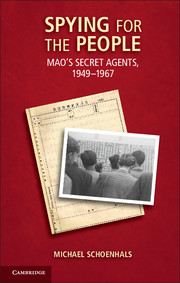5 - Recruitment
Published online by Cambridge University Press: 05 January 2013
Summary
There were no uniquely “socialist” ways of recruiting an agent: there were only those ways that worked and those that did not. Experienced operational officers had learned the hard way the importance of tailoring their approach to the target and understood only too well the meaning of the following injunction by Mao Zedong, included in a reader compiled under the aegis of the CMPS in the winter of 1959–60: “The most fundamental method of work that all Communists must firmly bear in mind is to determine our working policies according to actual conditions.”
Notwithstanding the pragmatism of Mao's statement, officers had to identify the most suitable recruitment strategies under the conditions prevailing in urban China after 1949. While, for example, the Shenyang Public Security Bureau Agent Work Initiation Procedures stressed the “absolute impermissibility of employing a fixed formula or attempting to follow the same rigid procedure every time,” it nevertheless described a finite number of strategies open to modification. Later textbooks attempted to strike a similar balance: the Lectures on the Subject of Agent Work devoted a full three chapters to the subject of recruitment, to be studied by officer cadets attending the Central People's Public Security Academy; at the same time, cadets were reminded that “there is no fixed rule that says where or in what capacity one should personally observe and study – or under what kind of cover one should meet and get to know – the target. Everything is determined by hard facts such as what the nature of the target's job is, what kind of life it leads, etc.” While stressing that, as a rule, the actual recruitment of the target was to be made “in the name of” the public security organs, the Lectures explained that the initial approach might also, under some circumstances, be attempted “under some other flag.”
- Type
- Chapter
- Information
- Spying for the PeopleMao's Secret Agents, 1949–1967, pp. 138 - 169Publisher: Cambridge University PressPrint publication year: 2013

